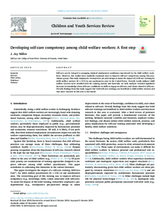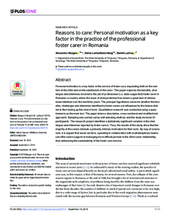Displaying 171 - 180 of 499
This study employed a retrospective pre/post design to assess the impact of a self-care training for child welfare workers (N=131) in one southeastern state in the United States.
In this blog post for the Global Social Service Workforce Alliance, part of a series celebrating Social Service Workforce Week, Colleen Fitzgerald writes about the need to support the social service workforce and to promote the well-being of caseworkers and social workers.
The purpose of this paper is to investigate how the recommending of contact in special guardianship cases is currently working, by holding focus groups with social workers and special guardians.
The first multi-country review of the social service workforce in the East Asia and Pacific region was prepared by the Global Social Service Workforce Alliance (GSSWA) and the United Nations Children’s Fund (UNICEF) East Asia and the Pacific Regional Office (EAPRO) with the support and contribution of many people throughout the region. This report is one of several regional reports being produced by GSSWA and UNICEF to increase the availability of information on the social service workforce, and provide a baseline from which to consider ongoing workforce strengthening initiatives.
This report is a review of the social service workforce in eight countries: Djibouti, Iran, Jordan, Lebanon, Morocco, Palestine, Sudan and Tunisia.
This country care review includes the Concluding Observations for the Committee on the Rights of the Child and the Committee on the Rights of Persons with Disabilities adopted as part of the Committees' examinations of Greece’s reports, as well as other care-related concluding observations, ratification dates, and links to the Universal Periodic Review and Hague Intercountry Adoption Country Profile.
This paper explores the benefits, challenges and dilemmas involved in the job of professional (i.e. state-supported) foster carer in Romania–a country where the issue of child protection has drawn a great deal of international attention over the last thirty years.
Comprised of 12 videos and accompanying discussion guides, this video series features the learning from practitioners working across a range of care-related programs and practices in Cambodia.
In this video, Leang Lo, from Save the Children Cambodia, shares some of his learning that informed the development of the Social Work Supervision Training Program for the member organisations of Family Care First (a network dedicated to supporting children to live in safe nurturing family-based care).






